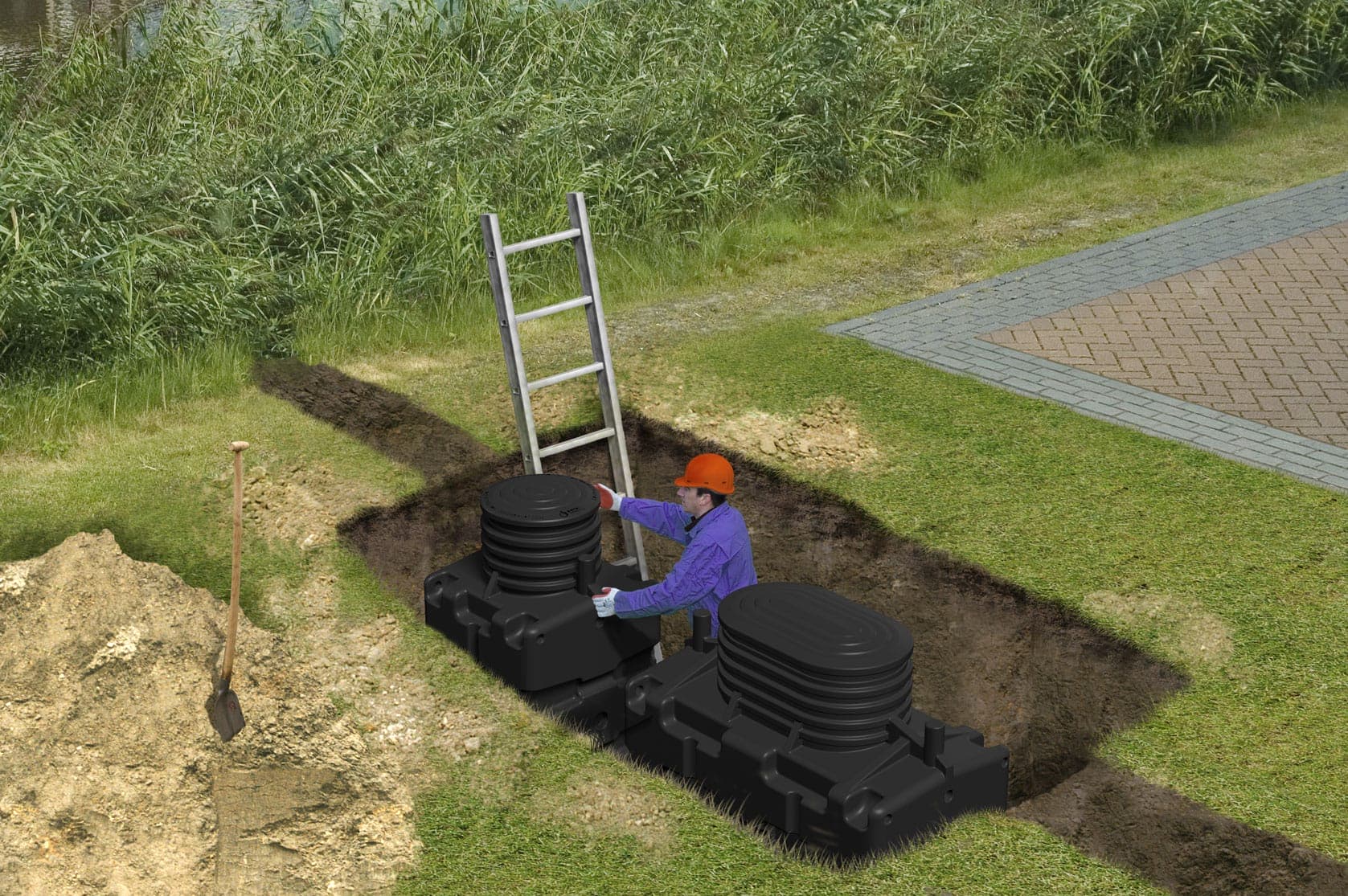What is the price of an individual sewage system? This is a question that many homeowners are asking themselves as they weigh their wastewater treatment options. There are a few different factors that will go into determining the final cost of an individual sewage system.
We will explore four of the most important factors: differences between micro plants and compact filters, administrative costs, maintenance costs, and the amount of aid available.
Micro plants and compact filters are two of the most popular individual sewage system options on the market. But what are the differences in price between these two options? Both options have their own advantages and disadvantages, so it is important to weigh all of the factors before making a decision. The final cost of an individual sewage system will depend on the specific circumstances of each homeowner.
Compact filters are typically more expensive than micro plants, but the running costs are usually lower. This is because compact filters have lower maintenance costs since they have fewer moving parts. Also, they don't require any electric power to treat wastewater: unless the installation requires the installation of a lifting system.
If you're looking for an individual sewage system option that is more effective, then a compact filter might be the better choice. Compact filters are able to remove more impurities from wastewater than micro plants. So, if you're interested in ensuring that the environment is protected, then a compact filter might be the right individual sewage system option for you.
Several factors come into play and make the price of these two types of individual sanitation systems vary, such as the choice of materials and the technology adopted, but also the treatment capacity of the system chosen. To help you make your choice, here is a table summarizing the advantages and disadvantages of the two types of systems: micro plants and compact filters.
Advantages of micro plants:
Complete and not very voluminous device (ground surface is about 5m² for a dwelling of 6 population equivalents),
Excavation work is limited,
Very easy to install (1 to 2 days maximum),
Can be installed above ground,
Odorless,
Easy to maintain.
Disadvantages of micro plants:
Being a very compact device: likely to produce sludge more quickly, resulting in more frequent emptying,
The purifying bacteria must be supplied with oxygen at all times: more sensitive to prolonged shutdowns so not suitable for second homes,
Additional cost for electricity (about 50 euros per year).
Advantages of compact filters:
No need for electricity to operate because it works by gravity flow (no additional cost to add),
Small footprint,
Simple and limited maintenance (no moving or mechanical parts),
Frequency of emptying more extended in time (tolerates intermittent use very well),
Reduced noise pollution.
Disadvantages of compact filters:
In some cases, it requires the installation of a lift pump,
Not recommended to install it above ground,
Less compact than a micro plant,
The media must be changed every 10 years approximatively.

BIOROCK treatment plant Installation
Now discover the characteristics of BIOROCK solution, combining the advantages of the two previous systems:
The compact filter is therefore a little more expensive to buy. In the long term, this cost could be justified by the fact that it does not consume energy, which is equivalent to about 50 euros per year for the micro plant. Moreover, this system is sometimes eligible for the eco-loan at a zero rate. In the end, even if the price is sometimes higher, the maintenance costs will be lower in the long term, so it's up to you to see what your priorities are, depending on your project.
Of course, there are other factors to consider when choosing an individual sewage system. The purchase cost of the device should not be considered a determining factor in the choice between a compact filter and a micro plant. Let's talk about the other costs that need to be taken into account.

The administrative costs are relatively the same whatever the type of individual sanitation chosen. It is the local authority and the engineering offices that will charge for their services.
In general, the local authority has the role of advising all users on all matters concerning sanitation.
The user is normally covered by the regulations:
Before making a decision, be sure to consult with your individual sewage system professional to get an accurate estimate of the administrative costs associated with your chosen option.
You should know that the local authority should limit itself to indicating the type of system that you can put in place in order to comply with the regulations in force in your country. That said, the local authority does not have the right to impose a particular brand of compact filter or micro-plant on you.
It's important to factor in administrative costs when choosing an individual sewage system. Otherwise, you could end up paying more than you anticipated.
The maintenance of an individual sewage system is the responsibility of the owner. He must ensure that it works properly, in order to avoid any pollution of his land or that of his neighbors.
maintenance of an individual sewage system is the responsibility of the owner. He must ensure that it works properly, in order to avoid any pollution of his land or that of his neighbors.
The frequency and costs of maintenance operations will obviously depend on the type of individual sanitation chosen. A compact filter will require less frequent intervention than a micro plant, but the maintenance of the compact filter will be a little more expensive when it is necessary.
It is important to know that the maintenance of an individual sewage system must be carried out by a company specialized in sanitation and not by any individual. The individual sewage system professional you choose should include maintenance in their offer.
Make sure to ask about maintenance costs before choosing an individual sewage system. You don't want to be stuck with a system that's expensive to maintain!
The micro plant and the compact filter need to be inspected and emptied on a yearly basis in order to operate at their maximum potential. If the micro plant is associated with more frequent maintenance, the usage of a compact filter will necessitate the periodic replacement of filtering media needed for its operation (which varies considerably from one substance to another: up to 10 years for a rock wool filter, up to 25 years for zeolite).
Concerning the cost of the emptying, it varies from 150 to 300€ for a fixed price of 3m3 to remove. This cost varies according to the emptier, the country in which you are located, and the ease of access to your local authority device.
The price can be more important if your house is located in an isolated place like in mountains or if the installation and in particular the manholes are not easily accessible.
 To complete the emptying, a professional will employ a specialized truck with multiple compartments: The wastewater from the tank will be stored in the first compartment, while grease and sludge will be kept in the second. Clearwater is placed in the third compartment to clean the emptied equipment and its pipes. This water can be used to fill the tank and thus prevent it from rising under the Archimedean pressure.
To complete the emptying, a professional will employ a specialized truck with multiple compartments: The wastewater from the tank will be stored in the first compartment, while grease and sludge will be kept in the second. Clearwater is placed in the third compartment to clean the emptied equipment and its pipes. This water can be used to fill the tank and thus prevent it from rising under the Archimedean pressure.
Your local authority can give you a list of approved emptiers in your area.
Whatever the sanitation system you choose, you will always have to budget several thousand euros. It is a significant investment and that is why generally the public authorities offer several aid and subsidies to households that decide to install such a device.
The compact filter, which does not require electricity to operate, is eligible for the zero rate eco-loan. It entitles you to a reduction in VAT to 10% and various types of subsidies.
Here are the other aids available to the individual who wishes to invest in an individual sanitation system:
In all cases, it is advisable to contact the local authority of your city, which will be able to inform you more precisely.
To conclude, the individual sewage system is a significant investment but it has the advantage of being autonomous and good for the environment. It is possible to benefit from various subsidies and aid to reduce the amount of the bill. Remember to maintain your individual sanitation system regularly in order to avoid any breakdown! Investing in an individual sewage system is an investment in the future of your family and your home. Contact your local authorities today to learn more about individual sewage systems and how they can benefit you and your community.
If you want more information about BIOROCK treatment plants, discover our all range of solutions here!